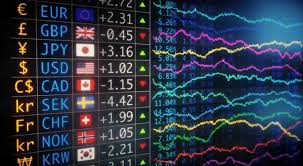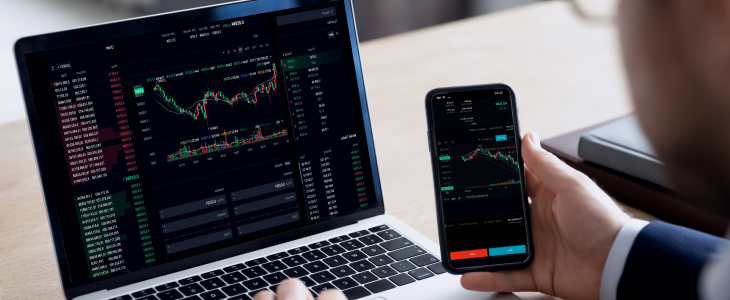
Forex trading is an exciting and potentially lucrative activity for investors. However, to succeed in this ever-changing financial market, one must adopt effective strategies. There are numerous approaches that traders can use to identify profitable trading opportunities. In this article, we will explore several successful forex trading strategies that can help you navigate this complex landscape. For more insights on trading techniques, visit forex trading strategies https://ex-zar.com/.
1. Understanding Fundamental Analysis
Fundamental analysis is a method of evaluating currencies by examining economic indicators, news events, and geopolitical factors that affect currency values. Traders who employ this strategy will analyze data from national economic reports, interest rates, employment figures, and retail sales. By understanding how these elements impact market sentiment, traders can make informed decisions about when to enter or exit a trade.
2. Technical Analysis: The Charting Approach
Technical analysis focuses on studying price actions and chart patterns to predict future market movements. Traders use various tools like moving averages, trend lines, and oscillators to identify potential trends and reversals. The beauty of technical analysis lies in its visual nature, allowing traders to spot patterns that may not be apparent through fundamental analysis. By mastering chart patterns such as head and shoulders, flags, and channels, traders can gain an edge in the market.
3. Trend Following Strategy
The trend-following strategy is significant in forex trading. This approach involves identifying and following long-term trends, whether upward (bull market) or downward (bear market). Traders using this strategy often rely on moving averages to determine the direction of the trend. By entering long positions in an uptrend and short positions in a downtrend, traders can effectively catch the momentum of the market.
4. Range Trading Strategy
Range trading is another popular strategy that involves identifying support and resistance levels. Traders who use this strategy expect the price to stay within a certain range. They execute buy orders at support levels and sell orders at resistance levels. Range trading can be particularly effective during times of low volatility when prices move sideways. However, it requires patience and discipline, as traders need to remain alert to breakouts that can occur when prices leave the established range.
5. Breakout Strategy
The breakout strategy is employed when traders anticipate that a currency pair will move significantly after breaking through established support or resistance levels. By entering trades as the price breaks out, traders can capitalize on sudden price movements. This strategy typically involves setting stop-loss orders just below the breakout level to manage risk effectively. To confirm breakouts, traders often look for increased trading volume, which indicates strong market participation.

6. Scalping: Quick Profits from Small Movements
Scalping is a high-frequency trading strategy that involves making numerous trades throughout the day to capitalize on small price movements. Scalpers aim to accumulate small profits from these trades, relying on quick execution and tight spreads. This strategy requires a deep understanding of market mechanics, rapid decision-making skills, and a solid trading plan. Scalpers also must manage their time effectively, as they often need to spend hours monitoring their charts and trades.
7. Carry Trade Strategy
The carry trade strategy involves borrowing funds in a currency with low interest rates and investing them in a currency with higher interest rates. This approach allows traders to benefit from both the price appreciation and the interest rate differential. While carry trades can yield significant returns in trending markets, they also come with heightened risks, especially during times of economic instability or when interest rates fluctuate. Traders must be vigilant about news events that could impact interest rates and currency values.
8. Position Trading for Long-Term Gains
Position trading is a long-term strategy where traders hold positions for weeks or months, basing their decisions on fundamental analysis and major economic events. This approach allows traders to ride out short-term fluctuations and focus on the bigger picture. Position trading requires discipline and patience but can be rewarding for those who are willing to commit their time and resources. Additionally, using a risk-to-reward ratio helps manage potential losses while maximizing profits.
9. Risk Management Strategies
No trading strategy is complete without the implementation of risk management techniques. Successful forex traders understand the importance of protecting their capital against significant losses. Common risk management strategies include setting stop-loss orders, taking profits at regular intervals, and determining your overall risk exposure before entering a trade. A popular rule is the 1% rule, which states that traders should not risk more than 1% of their trading capital on a single trade.
10. Psychological Discipline in Trading
Trading psychology plays a crucial role in a trader’s performance. Emotional decisions can often lead to rash trades and poor judgment. Successful forex traders cultivate a disciplined mindset, allowing them to stick to their trading plans and strategies even under pressure. Techniques such as maintaining a trading journal, practicing mindfulness, and setting realistic goals can assist traders in developing psychological resilience and clarity.
Conclusion
In the dynamic world of forex trading, having a solid strategy is paramount to achieving consistent success. From fundamental and technical analysis to various trading strategies like trend following, range trading, and scalping, the choices are vast. Importantly, risk management and psychological discipline must accompany these strategies to protect your investment and maintain a sustainable trading practice. By understanding and applying these strategies, traders can enhance their chances of profitability in the forex market.












